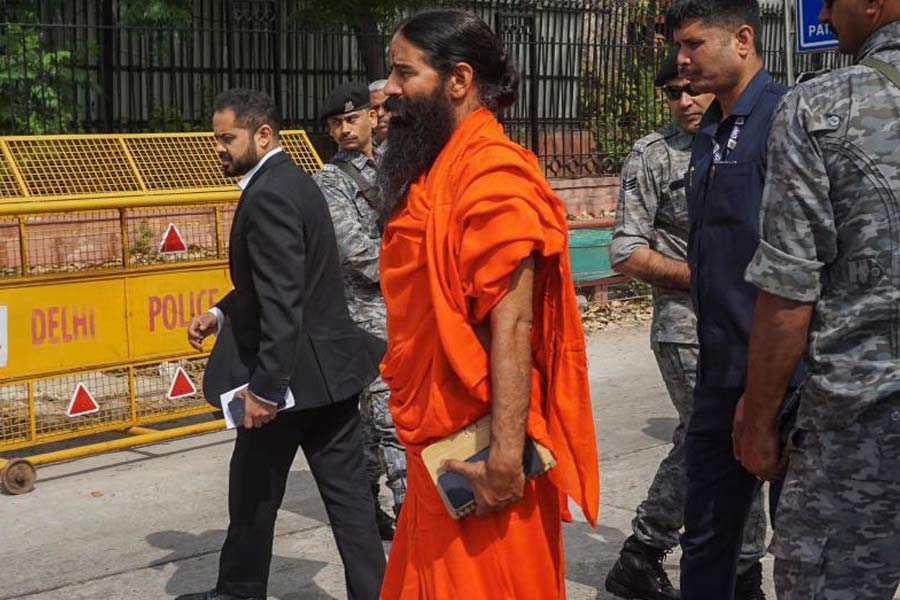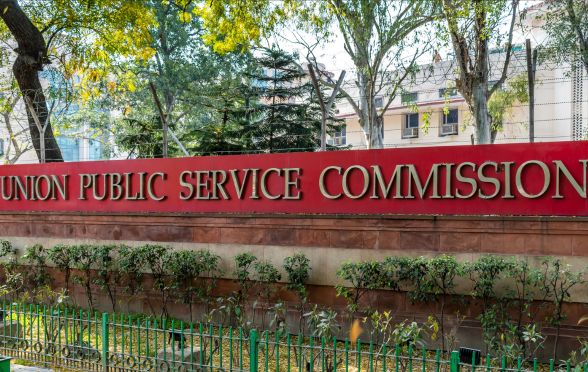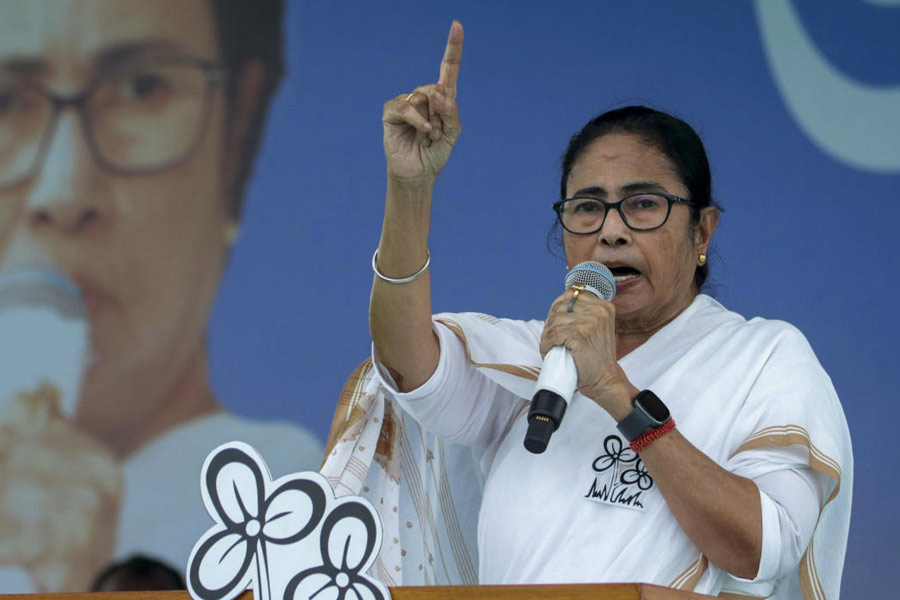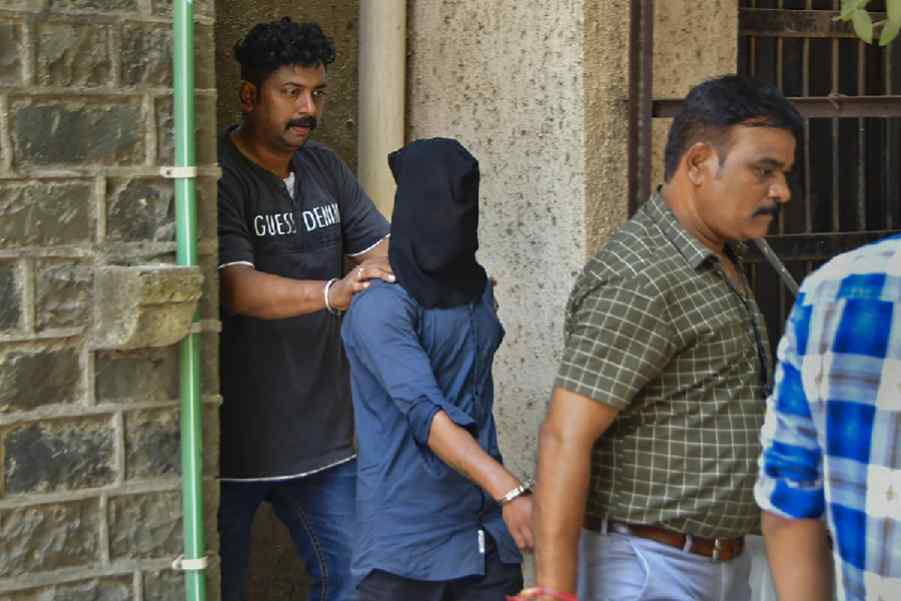The mythical gold rush has almost always flattered to deceive.
On Saturday, the truth of that aphorism played out once again in Yogi Adityanath’s Uttar Pradesh when a lowball functionary in the state’s bureaucratic bumbledom set social media channels on fire with the claim that a nearly 3,000-tonne gold reserve had been found in Sonbhadra district.
A senior officer in the Adityanath government had claimed off the record that huge vipers were protecting the gold reserve that would help India become the “Vishwaguru”.
But by Saturday afternoon, K.K. Rai’s claim had literally been ground to dust as the Geological Survey of India, the government’s assayer of mineral deposits, scrambled to douse the razzle-dazzle gossip.
M. Sridhar, director-general of the Calcutta-headquartered GSI, told reporters the claim had been grossly overblown.
Sridhar said: “There have been reports that about 3,000-plus tonnes of gold have been discovered in the Sonbhadra region, quoting the directorate of geology and mines, Uttar Pradesh. GSI is not a party to the information that has been released. We have not estimated such a vast resource of gold deposits. As a responsible organisation, we want to place the correct facts before the citizens of India.”
(An official in Uttar Pradesh had been quoted as saying 2,943.26 tonnes of deposits were found in one area and that of around 646.16kg in another. Both figures were initially reported in tonnes by a news agency. The discrepancy in the media reports could have been because of such confusion.)
The GSI director-general said the organisation had undertaken a survey in the region during a two-year period between 1998 and 2000 and had passed on information about the exploratory reports to the state government in November 2019.
“We have reported a very, very minor occurrence of gold with a resource of 52,806.25 tonnes of ore. A tonne of ore may contain on an average 3.03 grams of gold. If we work it out in terms of the resource from the entire ore, it may work out to only 160kg of gold,” Sridhar added.
“The area taken up for this work was also very small at about 0.50sqkm. Moreover, the nature of mineral isn’t consistent,” he said.
“After talking to the DGM, it definitely looks like there has been a miscommunication,” the GSI chief said.
The claim of 3,000-plus tonnes late on Friday night had raised the dazzling prospect that India would once again reclaim its historical allure as the Land of Gold that sent explorers from Europe scurrying across the seas in the quest for that El Dorado.
The grand announcement made by Rai, the mining officer in Sonbhadra district, immediately raised the hope that India would knock the world’s largest gold mine — the South Deep Gold Mine in South Africa’s Witwatersrand Basin near Johannesburg — off its exalted perch. South Deep has gold reserves of 32.8 million ounces.
Rai’s claim of 3,000-plus tonnes of gold deposit would mean that the Sonbhadra reserve would become the largest in the world, translating into 118.2 million ounces — more than three and a half times larger than the South African mine.
Sonbhadra is the second largest district in Uttar Pradesh.
Twitterworld was abuzz with talk that the Modi government’s fiscal deficit woes would now vanish at the drop of a spade. If all of the reserves were mined, it would translate into a Rs 12-trillion mountain of cash at current prices — easily papering over the Rs 7.96-trillion deficit forecast in the recent budget with enough left over to fund another fistful of the Modi government’s monetary jumlas.
Rai had claimed that the gold deposit had been found in Son Pahadi and Hardi areas of the eastern district in Uttar Pradesh. He said the deposits at Son Pahadi had been estimated at around 2,943.26 tonnes while that in the Hardi area was around 646.16kg.
On Saturday, Rai could not be contacted on the phone. Sources said he had been “asked from Lucknow not to speak on this issue”.
India once had a big reputation for large gold deposits, most of it plundered in the hoary past. The Kolar gold fields in Karnataka — established by the British in 1889 — kept the flames of that reputation alive till the mine closed in 2001, after yielding some 900 tonnes of gold over the past century according to some reports.
Gold mining in India is now carried out by only two firms at present: Hutti Gold Mines and Hindalco. The monthly production ranges between 0.5-0.7 tonnes.
A private player — Geomysore Services India — is expecting to start gold mining at Jonnagiri in Kurnool district of Andhra Pradesh next year.
India has the 10th largest pool of gold reserves in the world with the World Gold Council estimating it at 633.1 tonnes.
The US holds the top spot with (8,133.5 tonnes) followed by Germany (3,366.5 tonnes) and the IMF at 2,184 tonnes.
Most of the gold is held by the Reserve Bank of India. Minister of state for finance Anurag Thakur had said in a written reply to a question raised in the Lok Sabha on February 10 this year that the RBI held 618.16 tonnes of gold.
Of this, 292.30 tonnes are held in India and the remaining 325.86 tonnes have been parked in several central bank vaults overseas.










